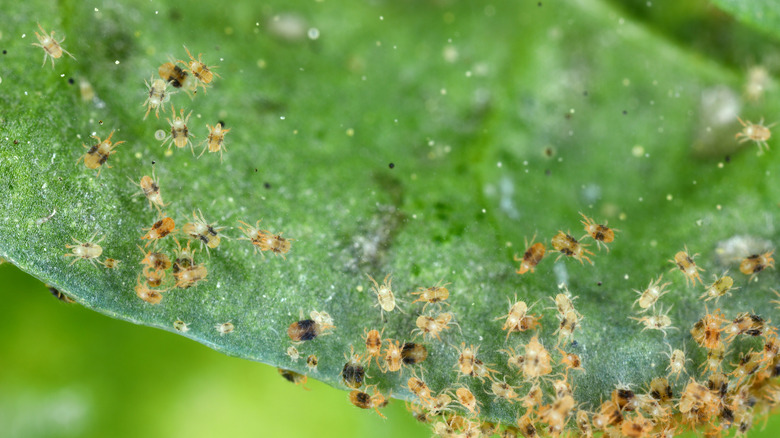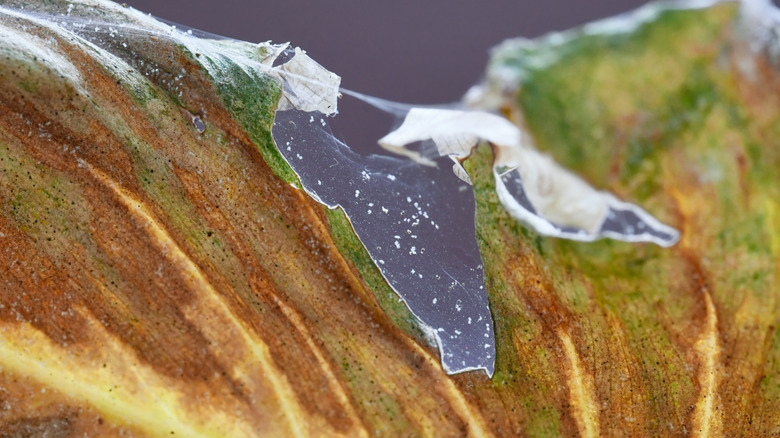How To Spot Spider Mite Leaf Damage On Plants
Apart from aphids and scales, spider mites are perhaps one of the worst garden pests you'll want to banish from your yard immediately. In high concentrations, they suck the foliage dry, causing premature bronzing and defoliation, stunted plant growth, or worse, untimely demise. But since spider mites are grain-sized and can only be positively identified through a hand lens, most gardeners remain oblivious to their presence. Their proclivity to populate leafy undersides further conceals their existence.
However, not all hope is lost. If you're willing to examine your precious plants every five days or so for the mites' typical leaf damage signals, you can pick up on their colonization and stave off further harm. So, what kind of leaf damage should you be scanning for? Start by perusing the lower leaves for stippling. Put simply, if it appears like someone painfully painted the foliage in white or yellow dots, odds are spider mites are hard at work because these dots represent their feeding points. Concurrently, you'll notice the leaves turning yellow — as if they're under-fertilized — due to the mites draining them of their chlorophyll. Eventually, the foliage will grow bronze, red, or dark brown (depending on the plant species), shrivel up, and drop down when it can no longer retain its hold.
Don't mistake spider mite damage for drought stress
Since spider mites are most active in dry, hot areas, gardeners often end up blaming drought stress for their outdoor plant leaves turning yellow. However, if the temperatures hover upwards of 85 degrees Fahrenheit and humidity is under 90%, spider mites can rapidly multiply. To differentiate drought stress from spider mite damage, you should feel the texture of bronzing foliage. As they grow out of their larvae and nymph stage, spider mites cast off their skins, bequeathing the foliage a gritty texture. As is natural to most living organisms, they, too, pump out feces, further hardening the leaves.
They can be difficult to spot because spider mites look no bigger than moving specks; however, the webs they leave in their wake are a telltale sign of an infestation. Keeping true to their name, spider mites weave silken threads between new leaves or as they progress upward along the plant's length. Sometimes, these fine webs even spread to the adjoining stems and fruits. When all these telltale signs combine, you're certainly looking at a spider mite problem. But if you wish to further solidify your prognosis, peek at the leaves' underside with a hand lens and try to spot spider mite eggs on plants. Alternatively, tap the leaves a couple of times to dislodge the arachnids on white paper and scan for movement.

